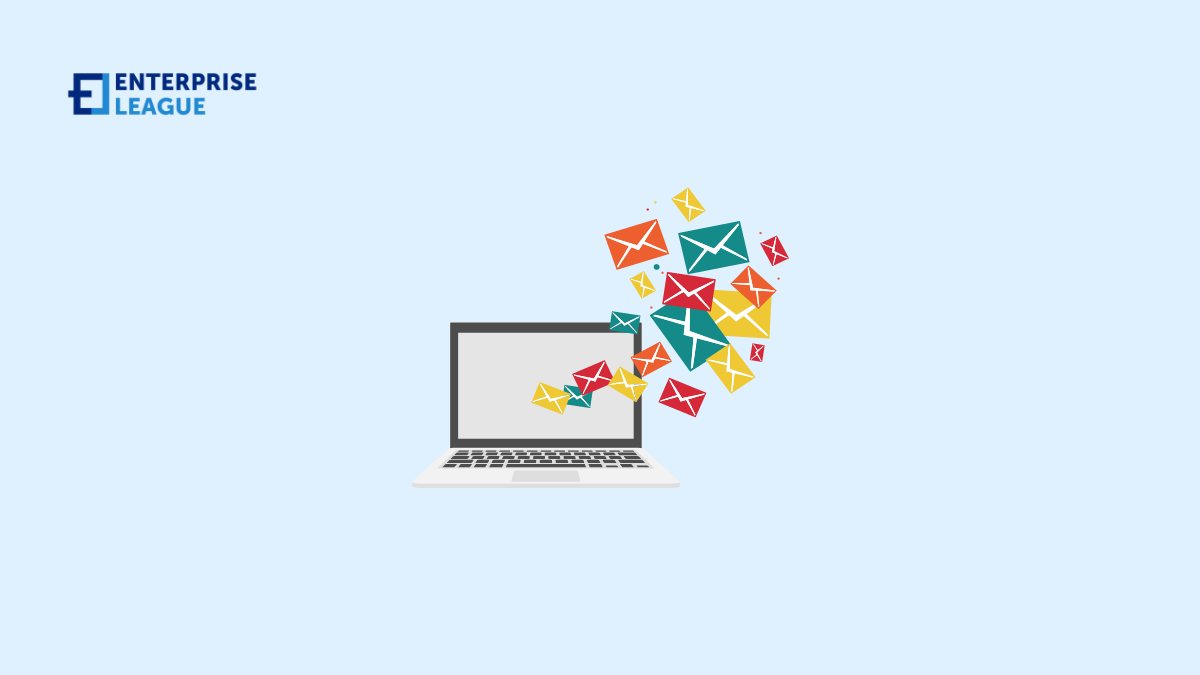There are 7 deadly sins of email marketing that can spell disaster in your emails—but luckily, they’re easy enough to avoid if you know what to look out for! From neglecting testing and personalization to failing to follow up on leads.
7 deadly sins of email marketing that can backfire your campaign
This guide will cover the 7 deadly sins of email marketing and how you can make sure they don’t ruin your campaigns. So let’s get started!
Sending too many emails
If there is one thing that will get your emails flagged as spam, it’s sending too many messages. Spam filters are designed to detect bulk emails and send them straight to the junk folder—and unfortunately, it doesn’t take much to trigger them. Implementing a strong DMARC policy increases protection
against potential email-related issues.
Even if you do manage to get your emails delivered, too many in a short period of time can be very off-putting for recipients. So make sure to keep an eye on your send frequency and adjust it accordingly.
For those of you that tend to be email-happy, try setting up an automated drip campaign. This way, you’ll be able to ensure that your emails are sent at regular intervals, without overwhelming your contacts.
Not personalizing emails
Another deadly sin of email marketing is neglecting to personalize your messages. That’s because your customers want to feel like you are talking directly to them—so make sure to use their name, mention past purchases or interests, and provide relevant content in the body of the email.
In fact, an Experian study found that personalized emails had a 29% higher open rate and 41% increased click-through rates than non-personalized emails. Personalizing your emails is a must if you want to get the most out of your campaigns.
The good news is, most email marketing platforms make it easy to incorporate personalization into your emails. So take the time to do some research and find out how you can make your messages more tailored to each recipient.
Not including a professional signature
Including a business email signature is essential to any professional email. Your signature should contain your name, job title, company logo, and contact information. Not only will it look more professional, but it will also give your customers an easy way to contact you directly.
Failing to include even the most basic of email signatures can make your emails look sloppy and unprofessional—which is the last thing you want when trying to convince customers to buy from you.
Failing to follow up
In email marketing, failing to follow up is a huge mistake. These days, the competition for customer attention is fierce, so it’s important to remind them of your brand and give them a reason to keep coming back.
One way to do this is by setting up an automated follow-up sequence. This can be a series of emails sent at predetermined intervals, like a few days after someone makes a purchase or subscribes to your list.
These emails can include special offers, discounts, or even just a friendly reminder that you’re still there. With the right follow-up sequence, you can ensure that your customers feel valued and keep coming back for more.
Not segmenting your lists
Segmentation is the practice of breaking up your mailing list into smaller, more targeted groups. This way, you can send more relevant content to different customers based on their interests or preferences.
For example, if you sell tickets to music events, you might segment your list into fans of rock, hip-hop, and country music. This enables you to send more specific content that resonates with each group, instead of a generic marketing message.
On top of this, segmenting your lists is likely to boost engagement and increase the chances of customers taking action on your emails. So make sure to take the time to figure out what kind of segmentation would work best for your business.
Failing to optimize your emails for mobile device
Mobile devices now make up a large portion of email opens, so it’s essential to optimize your emails for mobile. This means making sure that images display correctly and links are easy to click.
You should also consider using a responsive design template so that your emails look great on any device. This is especially important if you’re sending out newsletters or promotional emails, as a good design can make all the difference in how your messages are received.
Failing to do this could lead to a poor user experience, which could hurt your open and click-through rates—so make sure to optimize for mobile before sending out any further campaigns.
Not testing before you send
No matter how well you craft your emails, it’s important to test them before they’re sent out. This will help ensure that the message looks the way you intended and that all of the links work properly.
Most email marketing platforms have testing options, so make sure to use them before sending out any emails. This will save you a lot of time and frustration in the long run, as it’s much easier to catch small errors before they get sent out to your entire list.
After all, there is nothing worse than sending out an email to thousands of email subscribers only to find out later that it contains a glaring error. So make sure to test, test, and test some more before sending out any emails.
Conclusion
From making sure to include a professional email signature, segmenting your lists for more targeted campaigns, and optimizing for mobile devices, following these best practices will help ensure that your email marketing efforts are successful and that your customers stay engaged.
More must-read stories from Enterprise League:
- Benefits of owning a business according to business owners.
- Are there any benefits of having a 80 hour work week?
- Learn how to deal with rude customers in a creative way.
- Learn about how micromanaging can hurt your productivity.
- Learn about all the tips and apps you need to successfully manage a remote team.
Related Articles
10 business tips for beginners to help you build a healthy brand
Starting a business can be quite the challenge especially if you’re all new to entrepreneurship. These business tips for beginners will help you set off on the right foot.
SEO writing: Five foolproof tips to secure you the first page
When it comes to SEO writing it’s more guessing and less evidence about what works and what doesn’t. Luckily, we know what can really help you reach the first page.
How to onboard a new employee: Tips for quick integration
Your guide to smoother employee onboarding where you will find practical strategies that help new hires feel welcome and become productive team members faster.
10 business tips for beginners to help you build a healthy brand
Starting a business can be quite the challenge especially if you’re all new to entrepreneurship. These business tips for beginners will help you set off on the right foot.
SEO writing: Five foolproof tips to secure you the first page
When it comes to SEO writing it’s more guessing and less evidence about what works and what doesn’t. Luckily, we know what can really help you reach the first page.






